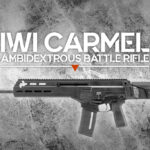
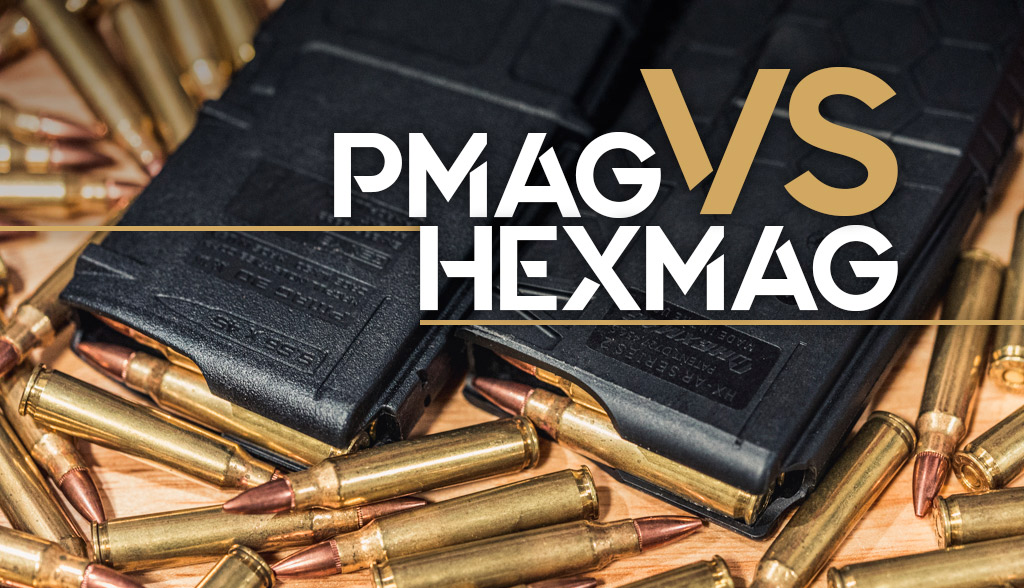
Whether you’ve just purchased your first AR-15, or own multiple AR-platform rifles, it’s essential that you purchase high-quality accessories. When someone mentions “must-have magazines” for the AR platform, many shooters immediately think of Pmag Vs Hexmag. There’s a reason for that, these two fantastic-plastic wonders are some of the best-selling magazines on the market.
While many accessories can certainly elevate your shooting experience, your rifle is useless without a good magazine. If you’re into Tupperware, Pmag and Hexmag are among the best options on the market. Both are made from tough-as-nails polymer that can really take a beating.
That being said, there’s still a lot of debate as to which option is best. Below, we’ll compare Pmag Vs Hexmag magazines head-to-head. When the dust settles, you’ll know which magazine is the right choice for your shooting applications.
Magpul Pmag History
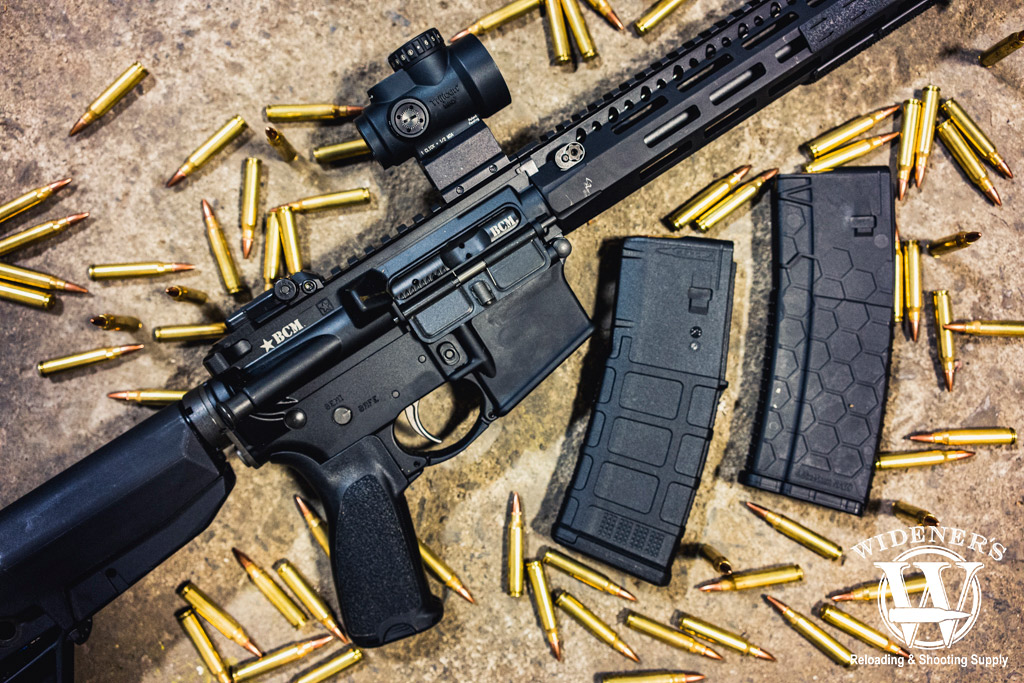
For more than a decade, Magpul has been the industry leader in polymer magazines.
As you likely know, Pmag is manufactured by the famous Magpul Industries. Magpul was founded in Boulder, Colorado in 1999. During their first few years in existence, Magpul focused on developing magazine pulls to assist front-line shooters in improving reload times.
Fast forward to 2007 and Magpul introduced the very first Pmag at SHOT Show. This particular version was designed specifically for the AR-15/M16 platforms. Over the years, they expanded their Pmag lineup. Currently, Magpul produces Pmags for the following platforms:
- AR15/M4/M16
- AK/AKM
- Glock
- Bolt Action Rifles
- SR25/M110/AR10
- MP5/G36/AUG
- CZ Scorpion EVO 3
Magpul is known for offering shooters a well-balanced combination of quality and affordability. We’ve used dozens of their products under harsh deployment conditions without fail, including Pmags.
However, we’re not ready to crown the Pmag the winner just yet. The Hexmag matches the Pmag blow for blow and has an outstanding reputation, more on that below.
Hexmag History
Hexmag products are currently sold by Sentry Tactical, but its lineage is a bit more complex than Magpul’s. The Hexmag brand was founded in 2013 in Loveland, Colorado by the Schefter brothers. They immediately began working on various prototypes and started selling the Gen 1 Hexmag in early 2014.
The company was extremely successful, especially in markets like California and Colorado. Mainly because they created 10 and 15 round magazines in accordance with the capacity restrictions of those states. However, Sentry Tactical acquired Hexmag in the fall of 2017. Since then, they have released the Gen 2 Hexmag, which further refined the original design.
Pmag Vs Hexmag: The Showdown
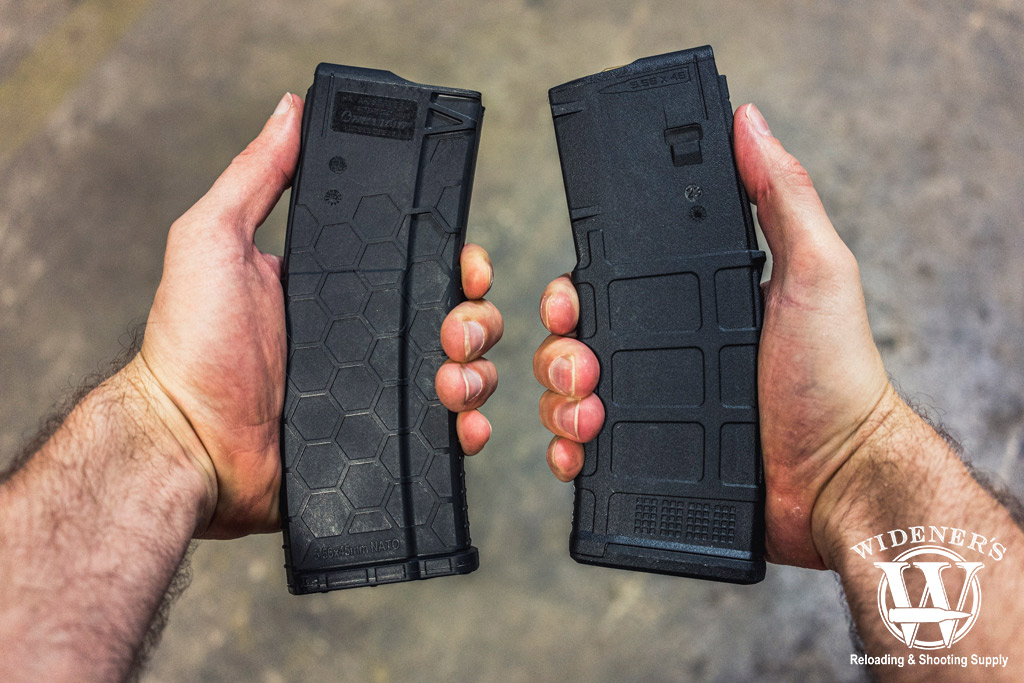
Comparing Pmag vs Hexmag isn’t as straightforward as it seems. Both are built tough and have great features.
Now that we’ve covered the origins of these two awesome magazine brands, it’s time to compare them. Below, we compare several key aspects of these two magazines with the goal of helping you find the right option for you.
| MSRP | Material | Capacity | Spring | Follower | Weight (Unloaded) | |
|---|---|---|---|---|---|---|
| Magpul Pmag (Gen 3) | $14.95 (Made In USA) | Polymer | 30 Rounds | Stainless Steel | Anti-Tilt | 5.1 oz |
| Sentry Hexmag (Series 2) | $15.99 (Made In USA) | Polymer | 30 Rounds | Stainless Steel | Anti-Tilt | 4.5 oz |
Durability
Both the Pmag and Hexmag incorporate high-strength polymer into their designs. The polymer is resistant to dents, cracking, and outdoor elements. Unlike metal magazines, the polymer used in these devices will not rust or corrode due to moisture.
The crush resistance of both magazines is essential to surviving in high-stress environments. Traditional metal magazines can become dented or misshapen, which can result in a failure to feed or other malfunction. Hexmag and Pmag both hold their shape, which minimizes the chances of a catastrophic malfunction.
The enhanced durability of these magazines means that they will serve you faithfully for years to come. Buying a set of polymer magazines is a great investment because they will withstand just about anything you can throw at them. Both options in this review are equally durable, so we will have to call this category a tie.
Spring Quality
The Pmag’s spring is stiffer right out of the box. Our caliper measured the Pmag spring at 0.05 inches (1.27mm) thick, and the Hexmag spring at 0.05 inches (1.27mm) thick. Our digital force gauge measured the compressed tension of the Pmag spring to be 6.88 Lbs, while the Hexmag spring tension measured at 6.28 Lbs.
While this means that with the Pmag there will be a brief break-in period, it may also translate to a longer lifespan for your magazine. It’s documented that Pmag’s spring will reliably feed thousands of rounds through your rifle without failing or faltering.
With that said, the Hexmag’s spring is no slouch. It provides a good level of resistance right out of the box and requires minimal break-in. The reduced resistance level makes it extremely easy to re-assemble and disassemble the Hexmag.
At the end of the day, We’d rather contend with a break-in period if it means that our spring will have a longer lifespan. It’s splitting hairs, but with that in mind, Pmag edges out the Hexmag.
Tilted Follower?
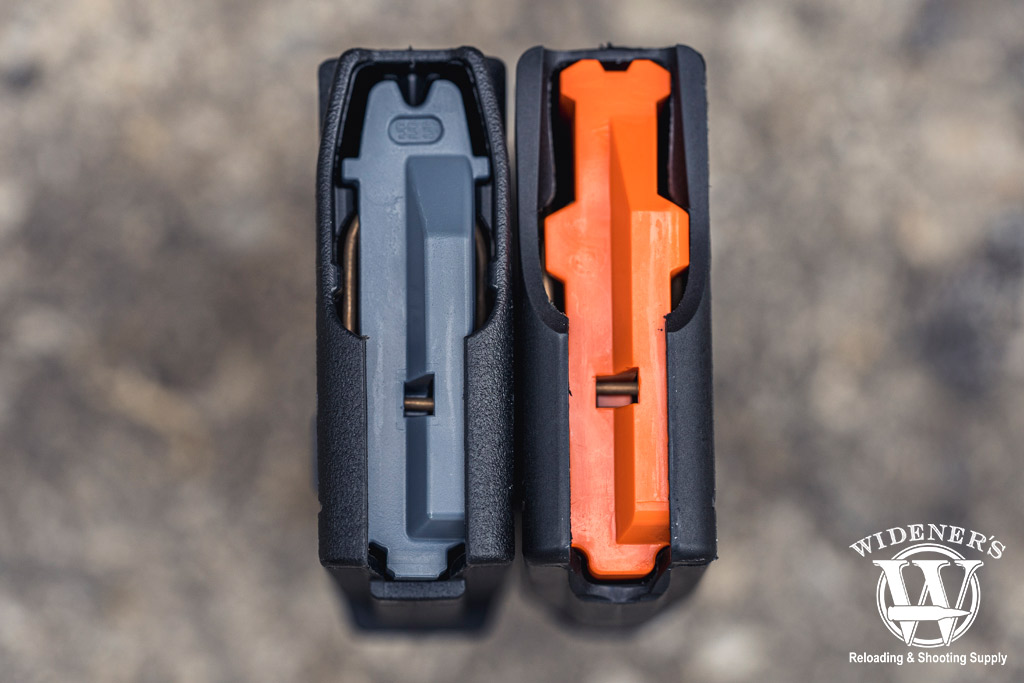
A tale of two anti-tilt followers with the Pmag on the left, and the Hexmag on the right.
There’s a lot of undocumented lore about polymer magazines floating around the internet. Everyone seems to remember hearing something, but few can recall where they actually heard it from. Such is the case with the supposed “tilted-follower” afflicting these polymer magazines. There’s nothing about the design of either of these polymer magazines that causes the follower to tilt.
Tilted followers are caused by weak, worn, or very dirty magazine springs. This isn’t a flaw that is specific to polymer magazines, it affects metal magazines as well. Most modern magazines have “non-tilt” followers already installed to combat this issue. Bottom line, keep your gear clean and inspect it often.
Pmag VS Hexmag: Feed Lips
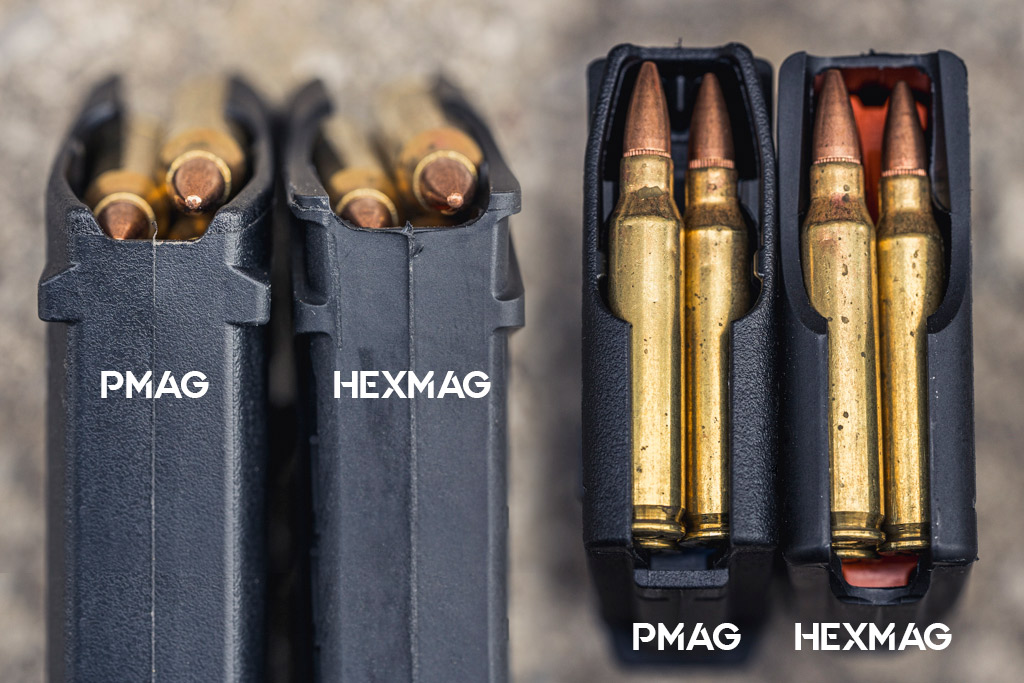
Improvements made to the feed lips of new generation magazines improved the design, reliability, and performance.
If you’ve been searching around the internet to compare Pmag vs Hexmag options, it’s likely you found ancient forum discussions about their validity. Most of the heated discussions in those days were about questioning the early generation feed lips. While often poorly documented, a few users claimed the early feed lip designs were prone to warping and bending after extended use.
Whether or not these claims were entirely valid, both companies made structural improvements to their feed lips in later generation models. If you’re buying Series 2 Hexmags, or anything at least Gen 2 from Pmag, it’s a non-issue. The robust improvements made to both company’s feed lips mean they’ll last just as long as any other magazine on the market under normal conditions.
Bolt Catch Issues
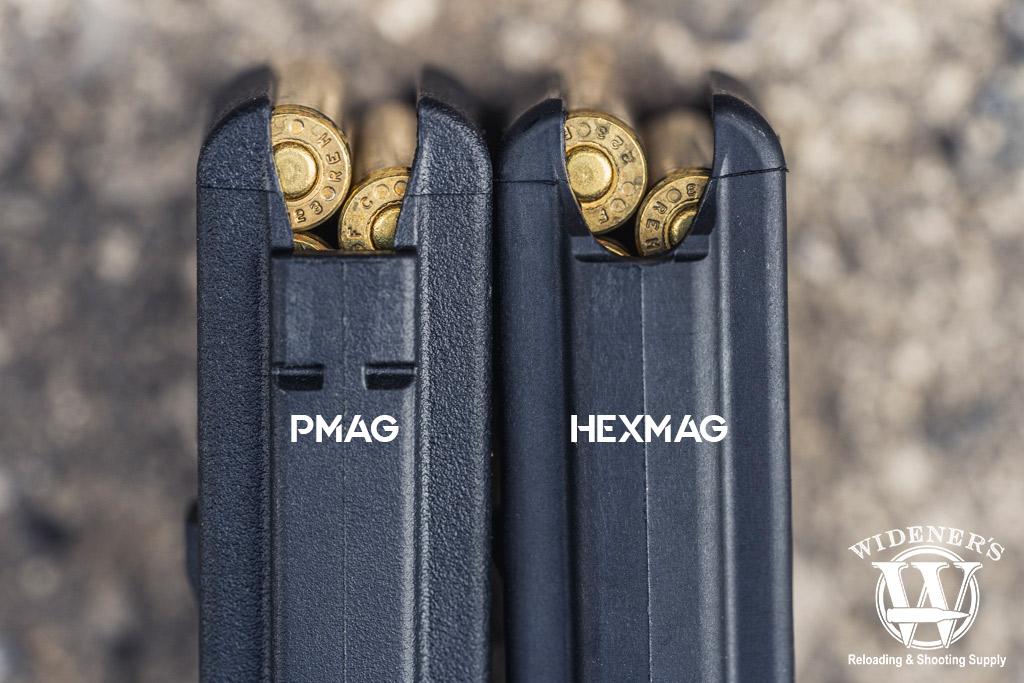
Having bolt catch issues? It might not be your magazine, check your lower to make sure it is within proper spec.
The reality of owning an AR rifle is that not every company abides by the same manufacturing tolerances for their guns. When you start adding accessories, specifically those with moving parts like a magazine, you’ll occasionally run into some issues. There have been reports of rifles having spacing issues with polymer magazines. The most common of these issues relate to the bolt catch assembly being too far away from the back of the magazine well.
We weren’t able to replicate this issue while comparing the Pmag vs Hexmag, but it’s a viable concern. If your magazine isn’t raising your bolt catch, your chamber won’t stay open after you fire your last round. When this happens, you’ll need to use your charging handle to reload, instead of simply dropping the bolt with your next magazine. If you experience this issue, make sure your lower is within spec, and your bolt catch is installed correctly and not worn down. It’s best to identify these two common issues with your rifle, before attempting to diagnose problems with your magazines.
Comparing Texture/Feel
It might appear that the Hexmag provides a superior grip texture due to its famous hexagon pattern. However, the Pmag’s rigid exterior and horizontal lines also provide an excellent amount of grip friction. This is especially evident when using them barehanded in wet weather or slippery conditions. Once again, both competitors are in a dead heat in this category.
Color Options
When it comes to color options, Hexmag pulls ahead of Pmag.
Currently, Pmag offers black, and Coyote tan magazine color options. In the past, they have also offered limited-run color Pmags, which you can occasionally find listed for sale online. They also offer Pmag variations, including 30-round windowed magazines for the AR platform.
On the other hand, Hexmag offers four standard magazine color options. These include your choice of black, flat dark earth, OD green, or gray.
While it is nice to have extra mag color options, it’s also fun to customize your build. Hexmag’s “HEXID” option allows you to do just that. The HEXID is a colored hexagon located on the bottom of the magazine. They offer a total of 8 HEXID colors, which includes:
- Orange
- Black
- Blue
- FDE
- Green
- Pink
- Red Yellow
The goal of this simple add-on is to allow you to quickly distinguish between various magazines. This is useful if you own multiple rifle platforms such as an AR-10 and AR15. You can also take advantage of the HEXID if you like to load different bullet types and keep your magazines organized.
Final Verdict
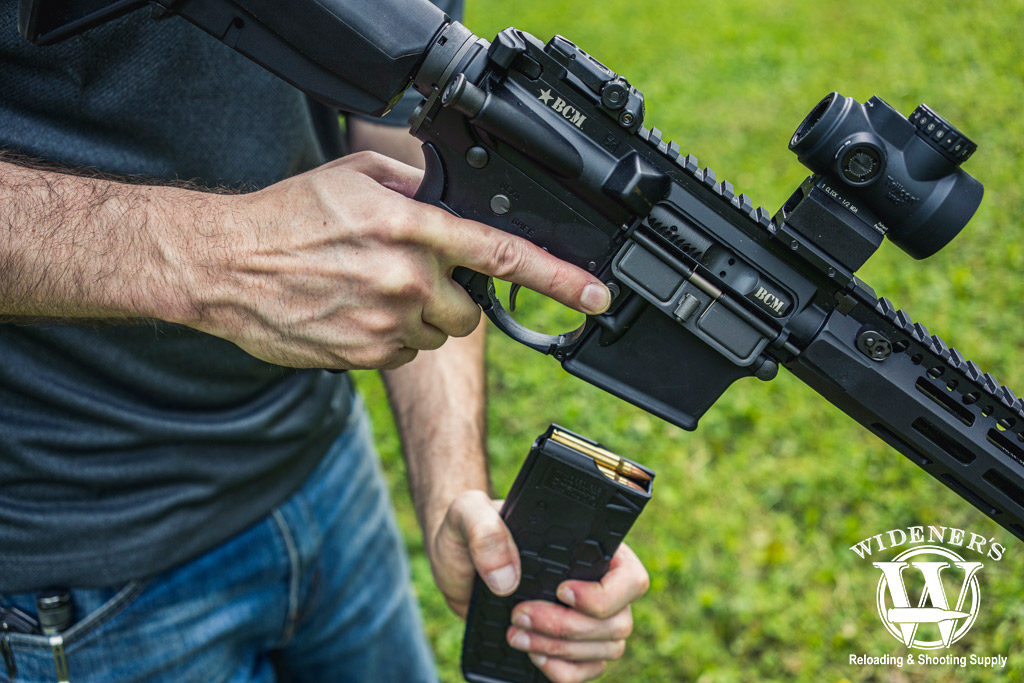
It’s a close call, but we’ll give the edge to the Magpul Pmag due to the amount of real-world testing data available.
As you can see, these two AR magazine options are closely matched. Both are made from high-quality materials that will serve you reliably for years to come. Applying proper maintenance, cleaning, and routine inspections after use will extend the life of your magazines.
With that said, we have to give a slight nod to the Magpul Pmag. While the Hexmag has some unique features, the Pmag has more real-world data confirming its reliability. It also offers a slightly better grip design, stiffer spring, and options for more weapons systems. Pmag remains the king of polymer magazines, at least for now.


